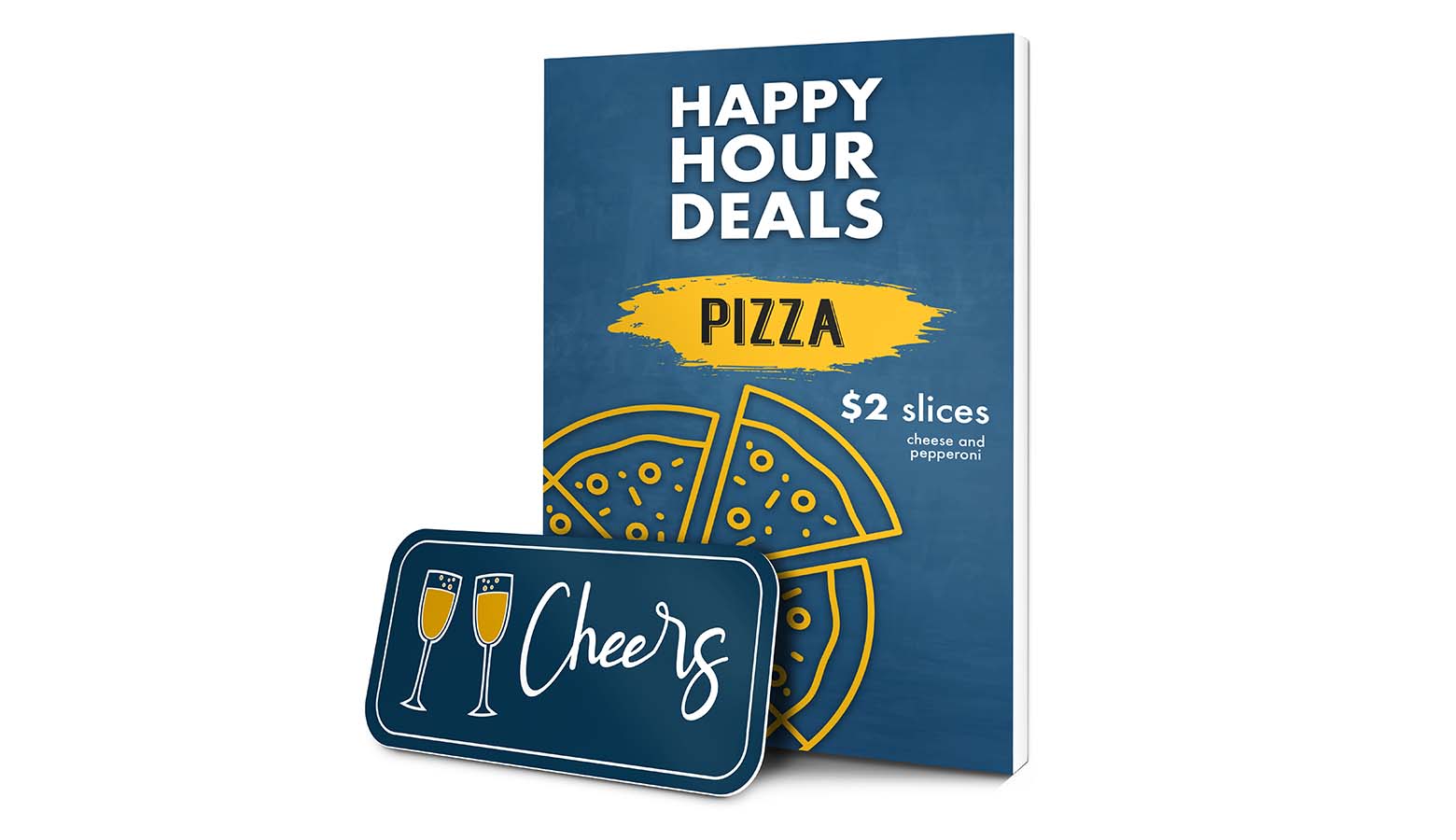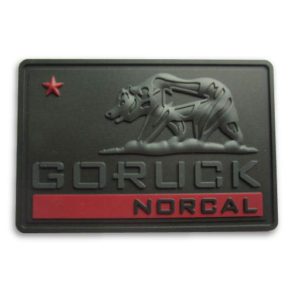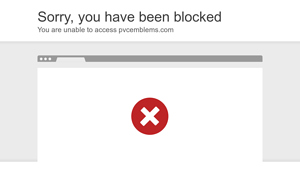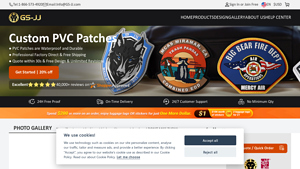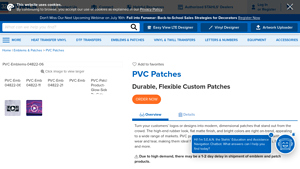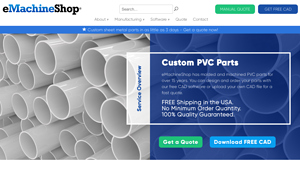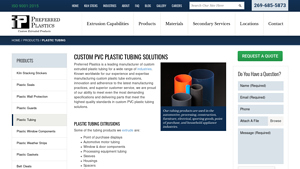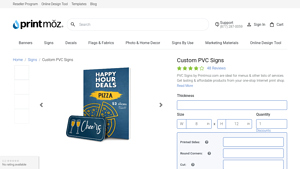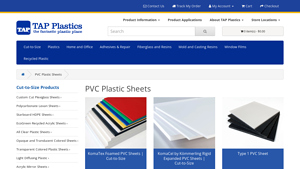Custom Pvc Guide: Type, Cost, Top List…
Introduction: Navigating the Global Market for custom pvc
In today’s competitive landscape, sourcing high-quality custom PVC products can present significant challenges for international B2B buyers. Understanding the intricacies of the global market is essential for making informed decisions that align with your business needs. This guide delves into the diverse world of custom PVC, covering various types, applications, and the importance of supplier vetting. With insights into cost considerations and best practices for procurement, this comprehensive resource equips buyers from Africa, South America, the Middle East, and Europe—particularly in key markets like Germany and Brazil—with the knowledge to navigate the complexities of sourcing effectively.
Custom PVC products, known for their durability, versatility, and vibrant designs, are increasingly sought after across multiple industries. From military uniforms to promotional merchandise, the applications are vast and varied. This guide not only highlights the features that set custom PVC apart from traditional materials but also addresses critical factors such as minimum order quantities, design options, and backing types. By providing actionable insights and practical strategies, this resource aims to empower B2B buyers to make confident purchasing decisions, ensuring they select the right products and suppliers to meet their specific requirements. Whether you are looking to enhance your brand’s visibility or improve product functionality, understanding the global market for custom PVC is your first step toward success.
Understanding custom pvc Types and Variations
| Type Name | Key Distinguishing Features | Primary B2B Applications | Brief Pros & Cons for Buyers |
|---|---|---|---|
| Standard PVC Patches | Durable, waterproof, and UV-resistant; flexible design | Military uniforms, promotional items | Pros: High durability, vibrant colors; Cons: MOQ may apply for custom molds. |
| 3D PVC Patches | Raised design for a dimensional look; customizable colors | Sports teams, fashion brands, tactical gear | Pros: Eye-catching appearance; Cons: More complex to produce, potentially higher costs. |
| PVC Coasters | Heat-resistant and waterproof; ideal for branding | Restaurants, events, corporate gifts | Pros: Practical use, easy branding; Cons: Limited design complexity compared to patches. |
| Velcro Backed PVC | Easy attachment and removal; reusable | Tactical gear, uniforms, promotional items | Pros: Versatile and user-friendly; Cons: Requires compatible Velcro backing. |
| Iron-On PVC | Simple application with heat; firm adhesion | Apparel manufacturing, custom clothing | Pros: Strong long-term hold; Cons: Requires heat source for application. |
What Are the Key Characteristics of Standard PVC Patches?
Standard PVC patches are renowned for their durability and waterproof nature, making them suitable for a variety of applications, particularly in military and promotional contexts. These patches are designed to withstand harsh environmental conditions, ensuring they maintain their appearance over time. When purchasing, B2B buyers should consider the minimum order quantities (MOQ) and the customization options available, as these can vary by supplier.
How Do 3D PVC Patches Stand Out in the Market?
3D PVC patches feature a raised design that adds a unique dimensional aspect, making them particularly appealing for sports teams and fashion brands. The customization allows for vibrant colors and intricate designs, enhancing brand visibility. However, buyers should be aware that the production process may be more complex and potentially more expensive, depending on the design intricacy.
What Are the Benefits of Using PVC Coasters for Branding?
PVC coasters are an effective branding tool, known for their heat resistance and waterproof properties. They are especially popular in the hospitality industry, where businesses can utilize them for promotional purposes at events or within their establishments. While they offer practical use, buyers should note that the design complexity may be limited compared to other custom PVC products.
Why Choose Velcro Backed PVC for Tactical Gear?
Velcro backed PVC patches provide a convenient solution for tactical gear and uniforms, allowing for easy attachment and removal. This reusability is a significant advantage for organizations that require frequent updates or changes to their insignia. B2B buyers should ensure they have compatible Velcro surfaces for optimal use, as this is essential for maintaining the patch’s functionality.
What Makes Iron-On PVC a Practical Choice for Apparel?
Iron-on PVC patches are favored for their straightforward application process, requiring only heat for a firm adhesion. They are commonly used in apparel manufacturing and custom clothing, providing a strong, long-lasting hold. Buyers should consider the heat application requirements when selecting this option, as well as the potential for permanent attachment, which may not be suitable for all garments.
Key Industrial Applications of custom pvc
| Industry/Sector | Specific Application of custom pvc | Value/Benefit for the Business | Key Sourcing Considerations for this Application |
|---|---|---|---|
| Military and Defense | Custom PVC patches for uniforms | Durable branding that withstands harsh environments; enhances team identity | Ensure compliance with military specifications and durability standards. |
| Fashion and Apparel | Decorative PVC patches for clothing | Adds personalization and style; promotes brand visibility | Focus on colorfastness and customization options; consider MOQ for production. |
| Sports and Recreation | Team logos and identifiers on gear | Boosts team spirit and recognition; enhances marketing efforts | Look for flexible order quantities; assess the patch’s weather resistance. |
| Promotional Products | Custom PVC items for branding | Effective marketing tool; long-lasting visibility | Evaluate design complexity and color options; consider shipping logistics. |
| Automotive and Transport | PVC labels and patches for vehicle branding | Durable identification solutions; withstands outdoor conditions | Ensure compliance with industry regulations; assess customization capabilities. |
How is Custom PVC Used in the Military and Defense Sector?
Custom PVC patches are extensively utilized in military uniforms to promote unit identity and morale. These patches are not only waterproof and durable but also resistant to fading, making them ideal for various terrains and weather conditions. For international buyers, particularly from regions like Africa and the Middle East, sourcing partners must ensure that the patches meet military specifications for durability and can withstand rigorous use. Additionally, understanding local regulations regarding military insignia is crucial for compliance.
What Role Does Custom PVC Play in Fashion and Apparel?
In the fashion industry, custom PVC patches serve as trendy embellishments on clothing, bags, and accessories. They allow brands to express individuality and creativity while enhancing brand visibility. B2B buyers from Europe and South America should prioritize suppliers who offer vibrant color options and quick turnaround times, as these factors are essential for keeping up with fast-changing fashion trends. Moreover, flexibility in order quantities can be beneficial for businesses looking to test new designs without significant upfront investment.
How Do Custom PVC Patches Enhance Team Spirit in Sports and Recreation?
Sports teams leverage custom PVC patches to create a sense of unity among players and supporters. These patches can be attached to uniforms, bags, and promotional merchandise, significantly boosting team visibility. For buyers in South America, where sports culture is vibrant, sourcing high-quality, weather-resistant patches is essential for outdoor events. Additionally, understanding the local market’s preferences for design and size can aid in selecting the most effective product.
What Benefits Do Custom PVC Products Offer for Promotional Marketing?
Custom PVC items are increasingly popular in promotional marketing due to their durability and versatility. Businesses can use PVC patches as giveaways or branding tools that last longer than traditional paper products. Buyers from Africa and the Middle East should focus on suppliers that can provide a variety of customization options, including colors and sizes, to fit different marketing strategies. Additionally, logistics and shipping considerations are vital, especially for bulk orders.
In What Ways Are Custom PVC Labels Used in the Automotive Sector?
In the automotive industry, custom PVC labels and patches are utilized for branding and identification purposes on vehicles. These labels are designed to endure harsh environmental conditions, ensuring longevity and visibility. B2B buyers from Europe, particularly Germany, should ensure that their sourcing partners can meet strict industry standards for safety and durability. Additionally, understanding the specific requirements for automotive labeling, including compliance with local regulations, is crucial for successful procurement.
3 Common User Pain Points for ‘custom pvc’ & Their Solutions
Scenario 1: Navigating Minimum Order Quantities
The Problem: Many international B2B buyers, particularly those in emerging markets, often struggle with the minimum order quantities (MOQs) set by manufacturers of custom PVC products. For instance, a small apparel brand in Brazil may require only 50 patches for a limited product launch but finds that most manufacturers enforce a MOQ of 100 or more. This scenario not only increases upfront costs but also ties up resources that could be allocated to other areas of the business.
The Solution: To effectively navigate this challenge, buyers should seek suppliers that offer flexible MOQ policies. Engage with manufacturers who explicitly state “no minimum quantity” or allow for smaller batches, especially for initial orders. It’s beneficial to establish a relationship with the manufacturer early on, discussing potential future needs which may encourage them to accommodate your current requirements. Additionally, consider pooling orders with other businesses to meet MOQ thresholds without incurring excess inventory costs. Online platforms that connect multiple buyers can also facilitate such arrangements, optimizing costs while ensuring you receive the custom PVC products you need.
Scenario 2: Achieving Design Precision and Quality
The Problem: B2B buyers often face difficulties in translating their design concepts into high-quality custom PVC products. A company in Germany may have a detailed logo that they want to feature prominently on their patches, but the resulting product may not accurately reflect their vision due to limitations in the manufacturing process or miscommunication with the supplier. This can lead to dissatisfaction and the need for costly reorders.
The Solution: To mitigate design-related issues, it’s crucial to invest time in developing a clear and comprehensive design brief. This should include high-resolution images, specific color codes (such as Pantone references), and detailed descriptions of desired textures and dimensions. When selecting a manufacturer, prioritize those who offer a robust proofing process, including 3D previews and unlimited revisions before production. This not only ensures that the designs meet your expectations but also helps to clarify any potential misunderstandings early in the process. Moreover, choosing manufacturers with proven track records and positive reviews in delivering similar custom PVC products can significantly enhance the outcome.
Scenario 3: Understanding Backing Options for Application Versatility
The Problem: Different projects may require varied application methods for custom PVC patches, yet buyers often feel overwhelmed by the array of backing options available—such as Velcro, iron-on, or adhesive. For a tactical gear supplier in the Middle East, selecting the wrong backing could result in patches that either fail to adhere properly or complicate the application process, leading to delays and additional costs.
The Solution: To make informed decisions about backing options, buyers should conduct a thorough needs assessment based on the intended use of the patches. For example, if the patches are meant for military uniforms, Velcro backing may be preferable for its reusability and easy attachment. Conversely, if the patches are for promotional purposes on clothing, iron-on or peel-and-stick options might be more suitable for quick application. Engaging with suppliers who offer guidance on the best backing for specific applications can provide valuable insights. Additionally, requesting samples of different backing types can allow for practical testing, ensuring that the final product meets the functional and aesthetic requirements of your brand.
Strategic Material Selection Guide for custom pvc
What Are the Key Materials Used in Custom PVC Production?
When selecting materials for custom PVC applications, it is essential to consider various options that cater to specific performance requirements and end-use applications. Below, we analyze four common materials used in the production of custom PVC patches, focusing on their properties, advantages, disadvantages, and implications for international B2B buyers.
What Are the Key Properties of Standard PVC?
Standard PVC (Polyvinyl Chloride) is the most common material used for custom PVC patches. It is known for its durability and versatility, making it suitable for a wide range of applications.
Key Properties: Standard PVC exhibits excellent weather resistance, is non-toxic, and can withstand temperatures ranging from -10°C to 60°C without significant deformation. It is also resistant to corrosion, which is crucial for outdoor applications.
Pros & Cons: The key advantages of standard PVC include its affordability, ease of manufacturing, and vibrant color retention. However, it may not perform well under extreme temperatures or UV exposure over prolonged periods, leading to potential fading or brittleness.
Impact on Application: Standard PVC is compatible with various media, including textiles and other synthetic materials, making it ideal for patches on uniforms, bags, and promotional items.
Considerations for International Buyers: Buyers should ensure compliance with local regulations regarding material safety and environmental impact. For instance, standards like ASTM in the U.S. or DIN in Germany may dictate specific requirements for PVC materials.
How Does Soft PVC Differ from Standard PVC?
Soft PVC is a modified version of standard PVC that offers enhanced flexibility and softness.
Key Properties: Soft PVC has a lower hardness rating, allowing it to bend and conform easily to different surfaces. It is also resistant to tearing and has a temperature tolerance similar to standard PVC.
Pros & Cons: The flexibility of soft PVC makes it ideal for applications requiring intricate designs or shapes. However, it may be more expensive to produce and less durable than standard PVC, particularly in high-stress environments.
Impact on Application: Soft PVC is particularly suitable for applications where comfort and fit are critical, such as patches on clothing and accessories.
Considerations for International Buyers: Buyers in regions with stringent environmental regulations should verify that soft PVC meets local compliance standards, as some formulations may contain phthalates or other substances that are restricted in certain markets.
What Are the Benefits of PVC with UV Resistance?
PVC with UV resistance is specifically engineered to withstand prolonged exposure to sunlight without degrading.
Key Properties: This material is treated with additives that enhance its UV stability, allowing it to maintain color integrity and physical properties even under harsh sunlight.
Pros & Cons: The primary advantage is its longevity in outdoor applications, making it ideal for military and tactical gear. However, the manufacturing process can be more complex and costly due to the additional additives required.
Impact on Application: This variant is particularly beneficial for patches used in outdoor settings, ensuring that branding remains visible and intact over time.
Considerations for International Buyers: Buyers should seek products that comply with international UV resistance standards, such as those set by JIS in Japan or ISO standards, to ensure quality and durability.
How Does Eco-Friendly PVC Compare to Traditional Options?
Eco-friendly PVC is designed to minimize environmental impact, often using bio-based materials or recycled content.
Key Properties: Eco-friendly PVC maintains similar mechanical properties to traditional PVC but with a reduced carbon footprint. It is often produced using less energy and fewer harmful chemicals.
Pros & Cons: The main advantage is the appeal to environmentally conscious consumers and businesses. However, it may come at a higher cost and could have limited availability in certain regions.
Impact on Application: This material is suitable for brands looking to promote sustainability while maintaining quality in their products.
Considerations for International Buyers: Buyers should confirm that eco-friendly PVC complies with local environmental regulations and standards, as these can vary significantly across regions.
Summary Table of Material Options for Custom PVC
| Material | Typical Use Case for custom pvc | Key Advantage | Key Disadvantage/Limitation | Relative Cost (Low/Med/High) |
|---|---|---|---|---|
| Standard PVC | Uniforms, bags, promotional items | Affordable and versatile | Limited UV resistance | Low |
| Soft PVC | Clothing, accessories | Enhanced flexibility | Higher manufacturing costs | Medium |
| UV Resistant PVC | Outdoor tactical gear | Long-lasting color integrity | Complex manufacturing process | High |
| Eco-Friendly PVC | Sustainable branding products | Reduced environmental impact | Higher cost and limited availability | Medium to High |
This strategic material selection guide provides B2B buyers with essential insights into the various materials available for custom PVC applications, enabling informed decisions that align with their specific needs and compliance requirements.
In-depth Look: Manufacturing Processes and Quality Assurance for custom pvc
What Are the Main Stages of the Manufacturing Process for Custom PVC?
The manufacturing process for custom PVC products, such as patches, involves several critical stages: material preparation, forming, assembly, and finishing.
How is Material Prepared for Custom PVC Products?
The process begins with the selection and preparation of high-quality PVC (polyvinyl chloride) material. Suppliers typically use liquid PVC, which is mixed with various additives to enhance durability, flexibility, and color vibrancy. The raw PVC is then subjected to a quality inspection to ensure that it meets the specified standards for color consistency, viscosity, and absence of impurities. This initial quality check is essential as it sets the foundation for the final product’s performance.
What Techniques Are Used in the Forming Stage of Custom PVC Production?
Once the material is prepared, the next step is forming the PVC into the desired shape. This is accomplished through a method called injection molding. In this technique, the prepared liquid PVC is poured into a custom metal mold that reflects the specific design of the patch. The mold is heated to allow the PVC to solidify into the intended shape. Precision during this stage is crucial, as it ensures that the design’s details are accurately captured. After cooling, the patches are extracted from the molds, showcasing vibrant colors and intricate designs.
How Does Assembly and Finishing Affect the Quality of Custom PVC Products?
After forming, the patches may undergo an assembly process if they require additional components, such as backing options (e.g., Velcro, adhesive, or iron-on). This stage also includes adding any finishing touches, such as edge trimming, surface cleaning, and applying protective coatings. These finishing processes not only enhance the aesthetic appeal of the patches but also improve their durability and resistance to wear and tear.
What Quality Control Measures Are Commonly Implemented in Custom PVC Manufacturing?
Quality control (QC) is a vital aspect of custom PVC manufacturing, ensuring that the final products meet international and industry-specific standards.
Which International Standards Should B2B Buyers Be Aware Of?
B2B buyers should look for suppliers who comply with international quality standards such as ISO 9001, which focuses on quality management systems. Additionally, certifications like CE (Conformité Européenne) are important for products sold within the European market, indicating compliance with health, safety, and environmental protection standards. For sectors such as oil and gas, API (American Petroleum Institute) certifications may also be relevant.
What Are the Key QC Checkpoints in the Manufacturing Process?
Quality control involves several checkpoints throughout the manufacturing process:
- Incoming Quality Control (IQC): This initial inspection examines the raw materials upon arrival to ensure they meet required specifications.
- In-Process Quality Control (IPQC): During the manufacturing stages, ongoing inspections are conducted to verify that the processes are functioning correctly and that the products are being produced to the specified quality.
- Final Quality Control (FQC): Once the products are completed, a final inspection ensures that the finished goods meet all quality standards before shipment.
What Common Testing Methods Are Used to Ensure Product Quality?
Various testing methods can be employed to verify the quality of custom PVC products. These may include:
- Durability Testing: Assessing the product’s resistance to wear and tear, including abrasion and impact resistance.
- Water Resistance Testing: Evaluating the product’s ability to withstand exposure to water and other environmental factors.
- Colorfastness Testing: Ensuring that colors do not fade when exposed to sunlight or washing.
How Can B2B Buyers Verify Supplier Quality Control Practices?
For international buyers, particularly those from Africa, South America, the Middle East, and Europe, verifying supplier quality control practices is crucial. Here are some actionable steps:
- Conduct Supplier Audits: Regular audits can help buyers assess whether the supplier adheres to quality standards and practices.
- Request Quality Reports: Suppliers should provide documented evidence of their quality control processes, including results from IQC, IPQC, and FQC.
- Utilize Third-Party Inspections: Engaging third-party inspection services can provide an unbiased assessment of the manufacturing processes and product quality.
What Are the Nuances of Quality Control for International B2B Buyers?
International B2B buyers must navigate various regulations and quality expectations specific to their markets. For instance, European buyers may face stricter compliance requirements compared to those in other regions. It’s essential for buyers to communicate their specific quality standards clearly and ensure that suppliers are equipped to meet those requirements.
Additionally, cultural differences may affect perceptions of quality and communication styles. Buyers should establish clear channels of communication and foster relationships with suppliers to ensure mutual understanding and compliance with quality expectations.
In summary, understanding the manufacturing processes and quality assurance measures in custom PVC production is essential for B2B buyers. By familiarizing themselves with these processes, buyers can make informed decisions, ensuring they receive high-quality products that meet their specific needs.
Practical Sourcing Guide: A Step-by-Step Checklist for ‘custom pvc’
Introduction
Navigating the procurement of custom PVC products can be a complex process, particularly for international B2B buyers. This step-by-step checklist is designed to guide you through the essential stages of sourcing custom PVC, ensuring that you make informed decisions and select the best suppliers for your needs.
Step 1: Define Your Technical Specifications
Before reaching out to suppliers, clearly outline your technical requirements. Consider aspects such as size, color, design complexity, and backing options (e.g., Velcro, iron-on). Defining these specifications upfront helps streamline communication and ensures that suppliers can meet your exact needs.
Step 2: Conduct Market Research
Explore the market landscape for custom PVC products. Identify key suppliers in your target regions, such as Africa, South America, the Middle East, and Europe. Look for companies that specialize in PVC patches and have a proven track record in your industry, as this will enhance the likelihood of quality and reliability.
Step 3: Evaluate Potential Suppliers
Before committing, it’s crucial to vet suppliers thoroughly. Request company profiles, case studies, and references from buyers in a similar industry or region. Pay attention to their production capabilities and delivery timelines, as these factors can significantly affect your project’s success.
- Check for certifications: Ensure the supplier meets international quality standards, which can be vital for compliance in various markets.
- Review client testimonials: Positive feedback from previous clients can provide insight into the supplier’s reliability and product quality.
Step 4: Request Samples
Once you have shortlisted potential suppliers, request samples of their custom PVC products. This step is essential to evaluate the quality, durability, and aesthetic appeal of the patches.
- Assess materials used: Look for waterproof, UV-resistant materials that will withstand various conditions.
- Evaluate craftsmanship: Check for precision in the design and finish to ensure it meets your standards.
Step 5: Clarify Pricing and Minimum Order Quantities (MOQs)
Discuss pricing structures and MOQs upfront to avoid unexpected costs later. Many suppliers have a minimum order requirement due to the custom nature of PVC products, so ensure this aligns with your budget and needs.
- Understand additional costs: Inquire about mold creation fees, color changes, and any other potential charges that could affect the overall cost.
- Negotiate terms: Don’t hesitate to negotiate pricing, especially if you plan to place larger orders in the future.
Step 6: Confirm Production and Delivery Timelines
Establish clear timelines for production and delivery. This is especially important for international orders where shipping times can vary significantly.
- Set milestones: Agree on key dates for design approval, production start, and shipping.
- Discuss contingency plans: Ensure that there are strategies in place for potential delays or issues.
Step 7: Finalize and Place Your Order
Once all details are confirmed, finalize your order with the chosen supplier. Ensure that you have a signed agreement outlining all aspects of the deal, including specifications, pricing, and delivery terms.
- Keep communication open: Maintain ongoing communication with the supplier throughout the production process to address any questions or changes that may arise.
- Review the final product upon receipt: Conduct a thorough inspection of the delivered items to ensure they meet your specifications before accepting them.
By following this checklist, you will be well-equipped to navigate the complexities of sourcing custom PVC products and establish productive partnerships with reliable suppliers.
Comprehensive Cost and Pricing Analysis for custom pvc Sourcing
What Are the Key Cost Components in Custom PVC Production?
Understanding the cost structure of custom PVC sourcing is crucial for international B2B buyers. The main cost components include:
-
Materials: The primary material used is PVC, which can vary in quality and price. High-quality, durable PVC may come at a premium, but it enhances the product’s longevity and aesthetic appeal. Additionally, the inclusion of colors and additives for UV resistance can influence material costs.
-
Labor: Labor costs are affected by the complexity of the design and the level of customization required. Skilled labor is essential for tasks such as mold creation and quality control, which can drive up costs.
-
Manufacturing Overhead: This includes costs associated with factory operations, utilities, and equipment maintenance. Efficient production processes can help minimize these overheads, making it essential to partner with manufacturers that prioritize operational efficiency.
-
Tooling: Custom PVC patches require specific molds tailored to each design. The initial tooling costs can be significant, particularly for low-volume orders. These costs are typically amortized over larger orders, making higher quantities more cost-effective.
-
Quality Control (QC): Implementing strict QC measures ensures that the final product meets the required standards. This might add to the cost but is crucial for maintaining brand reputation, especially for products used in professional settings like military uniforms.
-
Logistics: Shipping costs vary based on the size of the order, shipping distance, and chosen Incoterms. Buyers should consider logistics as part of the total cost, especially when sourcing from overseas suppliers.
-
Margin: Suppliers will typically include a profit margin in their pricing. Understanding the average market margins can help buyers negotiate better prices.
How Do Price Influencers Affect Custom PVC Orders?
Several factors influence the pricing of custom PVC products, including:
-
Volume/MOQ: Minimum order quantities (MOQs) can significantly impact unit costs. Larger orders often lead to lower per-unit prices due to economies of scale, making it more economical for businesses to order in bulk.
-
Specifications and Customization: More complex designs or additional features (like specific backings or unique shapes) can increase costs. Buyers should weigh the benefits of customization against the potential price increase.
-
Materials and Quality Certifications: Higher-quality materials and certifications (such as ISO standards) can justify higher prices. Buyers should assess whether these factors align with their product needs.
-
Supplier Factors: Supplier reputation, location, and production capabilities can all influence pricing. Established suppliers with efficient processes may offer better pricing due to their operational advantages.
-
Incoterms: The chosen Incoterms affect shipping costs and responsibilities. Understanding these terms is essential for budgeting the total cost of ownership.
What Tips Can Help Buyers Optimize Their Custom PVC Sourcing?
International B2B buyers can employ several strategies to enhance cost-efficiency:
-
Negotiate Wisely: Leverage volume commitments to negotiate better pricing. Suppliers are often willing to reduce prices for larger orders or long-term partnerships.
-
Consider Total Cost of Ownership (TCO): Evaluate not just the initial price but also the long-term costs associated with quality, durability, and potential reorders. Investing in higher-quality PVC may reduce replacement costs over time.
-
Be Mindful of Pricing Nuances for International Transactions: Currency fluctuations, import duties, and taxes can affect the final cost. Buyers should factor these into their budget and consider establishing contracts that mitigate these risks.
-
Request Samples and Digital Proofs: Before finalizing large orders, request samples to assess quality and ensure that the final product meets expectations. This step can prevent costly mistakes.
-
Engage in Continuous Supplier Evaluation: Regularly assess suppliers based on quality, pricing, and service to ensure you are getting the best value for your investment.
Disclaimer on Indicative Prices
Prices for custom PVC products can vary widely based on the factors discussed above. Buyers are encouraged to request detailed quotes from multiple suppliers to gain a comprehensive understanding of the cost landscape and to ensure they are making informed purchasing decisions.
Alternatives Analysis: Comparing custom pvc With Other Solutions
Introduction to Alternatives for Custom PVC Solutions
When considering branding, identification, or decorative solutions, businesses often explore various materials and technologies. Custom PVC patches are a popular choice due to their durability and versatility. However, alternatives such as embroidered patches, woven patches, and fabric labels also offer unique advantages. This analysis will help B2B buyers evaluate these options to determine the best fit for their specific needs.
Comparison Table
| Comparison Aspect | Custom PVC | Embroidered Patches | Woven Patches |
|---|---|---|---|
| Performance | Highly durable, waterproof, and UV resistant. Excellent for outdoor use. | Good durability but can fray over time. | Strong detail and clarity but less durable than PVC. |
| Cost | Moderate initial setup cost due to custom molds, but competitive for bulk orders. | Generally lower cost but varies with complexity. | Higher cost for intricate designs due to finer thread use. |
| Ease of Implementation | Requires custom molds; initial setup can be time-consuming. | Easier and faster to produce with no mold required. | Slightly complex due to specific weaving techniques. |
| Maintenance | Low maintenance; easy to clean and resistant to fading. | May require more care to prevent fraying and fading. | Low maintenance but can lose clarity over time. |
| Best Use Case | Ideal for tactical gear, outdoor apparel, and branding on uniforms. | Great for casual wear and promotional items. | Best for high-detail logos and items requiring a professional finish. |
Detailed Breakdown of Alternatives
1. Embroidered Patches
Embroidered patches are made from thick threads stitched together to create designs. They are commonly used for uniforms, promotional merchandise, and casual apparel. The primary advantage is their cost-effectiveness and ease of production, as they do not require custom molds. However, embroidered patches can fray over time, especially when exposed to harsh conditions, making them less durable than PVC alternatives. For businesses focused on budget-friendly options and casual branding, embroidered patches may be suitable.
2. Woven Patches
Woven patches use finer threads woven closely together, allowing for sharp detail and clarity. They are ideal for intricate designs that require a professional appearance. While they offer a refined look, woven patches can be more expensive than their embroidered counterparts and do not offer the same level of durability as PVC. They may be best suited for applications where detail is paramount, such as branding high-end apparel or accessories. However, businesses must weigh the increased cost against the desired quality.
Conclusion: How to Choose the Right Solution for Your Needs
When selecting the right branding or decorative solution, B2B buyers should consider their specific requirements, such as durability, cost, and intended use. Custom PVC patches stand out for their resilience and versatility, making them ideal for tactical or outdoor applications. However, if budget constraints are a priority, embroidered patches may provide a more economical choice. For businesses seeking high detail and a polished look, woven patches might be the preferred option. Ultimately, understanding the performance characteristics and cost implications of each alternative will empower buyers to make informed decisions that align with their branding objectives.
Essential Technical Properties and Trade Terminology for custom pvc
What Are the Key Technical Properties of Custom PVC?
When considering custom PVC products, understanding the technical properties is essential for making informed purchasing decisions. Here are some critical specifications to consider:
-
Material Grade: The quality of PVC used can significantly affect the durability and performance of the patches. Industrial-grade PVC is often preferred for its enhanced weather resistance and flexibility, making it suitable for outdoor applications. Selecting the right material grade ensures that the product meets specific environmental conditions and usage scenarios.
-
Tolerance: This refers to the acceptable limits of variation in the dimensions of the PVC patches. For instance, a tolerance of ±1mm might be standard for most applications. Understanding tolerance is crucial for ensuring that the patches fit properly on garments or equipment, thus avoiding production delays or returns due to improper sizing.
-
Colorfastness: This property indicates how well the colors of the PVC patches resist fading when exposed to sunlight, moisture, or washing. High colorfastness is vital for products intended for outdoor use or frequent washing, ensuring that branding and designs remain vibrant over time.
-
Adhesion Strength: For PVC patches with adhesive backings, adhesion strength is a key property. It measures how well the patch adheres to various surfaces without peeling off. This is particularly important for applications on uniforms and tactical gear, where durability and reliability are paramount.
-
UV Resistance: Given that many custom PVC applications are used outdoors, UV resistance is critical. This property prevents degradation caused by prolonged sun exposure, ensuring the longevity of the patches. Buyers should look for PVC products that specifically mention UV resistance to ensure they withstand harsh environmental conditions.
-
Waterproofing: The ability of PVC to repel water is essential for maintaining the integrity of the patches in wet conditions. Waterproof PVC patches are especially valuable in industries like military and outdoor gear, where exposure to the elements is common.
Which Trade Terms Are Important in the Custom PVC Industry?
Familiarity with industry-specific terminology can greatly enhance communication and negotiation processes. Here are several common jargon terms you should know:
-
OEM (Original Equipment Manufacturer): This term refers to companies that produce parts or equipment that may be marketed by another manufacturer. In the custom PVC industry, an OEM may create the patches based on the specifications provided by the buyer. Understanding OEM relationships can help buyers navigate sourcing and production processes more effectively.
-
MOQ (Minimum Order Quantity): MOQ is the smallest quantity of a product that a supplier is willing to sell. For custom PVC patches, MOQs can vary based on the complexity of the design and the creation of molds. Knowing the MOQ helps buyers assess the feasibility of their orders and plan their budgets accordingly.
-
RFQ (Request for Quotation): An RFQ is a document that a buyer sends to suppliers to request pricing for specific products or services. This process is crucial for obtaining competitive pricing and ensuring that the supplier can meet the buyer’s specifications.
-
Incoterms (International Commercial Terms): These are a set of predefined commercial terms published by the International Chamber of Commerce (ICC) that define the responsibilities of buyers and sellers in international trade. Understanding Incoterms is essential for clarifying shipping responsibilities, costs, and risk management in cross-border transactions.
-
Backer Type: This term refers to the various backing options available for PVC patches, such as iron-on, Velcro, or adhesive. Each type has its own advantages, and understanding these can help buyers choose the most suitable option for their specific application.
-
Digital Proof: Before production begins, suppliers often provide a digital proof of the design for approval. This step is crucial for ensuring that the final product meets the buyer’s expectations. Familiarity with the digital proofing process can save time and reduce errors in production.
By grasping these technical properties and trade terms, B2B buyers can make more informed decisions when sourcing custom PVC products, ultimately leading to better outcomes for their businesses.
Navigating Market Dynamics and Sourcing Trends in the custom pvc Sector
Market Overview & Key Trends: What Drives the Custom PVC Sector?
The custom PVC sector is experiencing notable growth, driven by increasing demand across various industries such as fashion, military, and promotional products. Global market dynamics are influenced by factors including the rise of e-commerce, which enables international buyers to source custom PVC products more easily, and the growing emphasis on personalization in consumer goods. Emerging technologies, such as advanced manufacturing and digital design tools, streamline the production process, allowing for faster turnaround times and greater customization options.
In regions such as Africa, South America, the Middle East, and Europe, particularly in countries like Germany and Brazil, buyers are seeking suppliers that offer flexibility in order quantities and rapid prototyping services. The ability to cater to small batch orders without minimum quantity requirements is becoming a competitive advantage, as businesses increasingly prioritize agility in their supply chains. Furthermore, the trend towards sustainability is reshaping sourcing strategies, with buyers favoring manufacturers that demonstrate eco-friendly practices and materials.
Sustainability & Ethical Sourcing in B2B: How Important is It for Custom PVC?
As environmental concerns continue to rise, sustainability in the custom PVC sector is becoming critical for international B2B buyers. The production of PVC has historically raised questions about its environmental impact, leading to a demand for more sustainable alternatives and practices. Companies are now focusing on ethical sourcing by ensuring that their supply chains are transparent and comply with environmental regulations.
Buyers are increasingly looking for suppliers that utilize recycled materials or eco-friendly production methods, such as low-emission manufacturing processes. Certifications such as ISO 14001 (Environmental Management) or the use of green materials can serve as benchmarks for assessing the sustainability of suppliers. This shift not only meets consumer expectations but also aligns with global initiatives aimed at reducing plastic waste. For businesses in Africa, South America, the Middle East, and Europe, partnering with sustainable suppliers can enhance brand reputation and customer loyalty, making ethical sourcing a strategic imperative.
Brief Evolution/History: How Has the Custom PVC Market Developed?
The custom PVC market has evolved significantly since its inception. Initially, PVC was primarily used in industrial applications due to its durability and versatility. Over the years, its aesthetic potential was recognized, leading to the creation of custom PVC products such as patches, labels, and accessories. Advances in manufacturing techniques, including injection molding and digital printing, have enabled more intricate designs and quicker production times.
As consumer preferences shifted towards personalization and branding, the demand for custom PVC items soared. Today, businesses leverage PVC’s unique properties—such as waterproofing, UV resistance, and durability—to create products that meet diverse needs. This evolution has positioned custom PVC as a staple in various sectors, catering to both functional and decorative requirements. For B2B buyers, understanding this history is essential to recognizing the value and potential applications of custom PVC in their operations.
Frequently Asked Questions (FAQs) for B2B Buyers of custom pvc
-
How do I determine the right supplier for custom PVC patches?
When sourcing custom PVC patches, evaluate potential suppliers based on their experience, production capabilities, and customer reviews. Request samples to assess quality and durability. Additionally, verify their compliance with international standards, especially if you require specific certifications. A reliable supplier should also provide clear communication and support throughout the process, ensuring they understand your design requirements and timelines. Engaging with suppliers who offer transparent pricing, flexible minimum order quantities, and strong after-sales support is crucial for a successful partnership. -
What are the benefits of choosing PVC patches over other types?
PVC patches are highly durable, waterproof, and resistant to UV rays, making them ideal for outdoor applications. Unlike embroidered patches, they do not fray when exposed to Velcro, ensuring longevity even under harsh conditions. Their flexibility allows for intricate designs and vibrant colors, enhancing brand visibility. Additionally, PVC patches are lightweight and easy to clean, making them suitable for a variety of uses, from military uniforms to promotional merchandise. This combination of durability and aesthetic appeal makes them a preferred choice for many businesses. -
What is the minimum order quantity (MOQ) for custom PVC patches?
The MOQ for custom PVC patches typically ranges from 100 to 500 pieces, depending on the supplier and the complexity of the design. This MOQ is necessary due to the initial costs associated with creating custom molds. However, some suppliers may offer flexibility in smaller orders for established clients or specific promotional needs. It’s advisable to discuss your requirements with potential suppliers to explore options for lower MOQs or alternative solutions that meet your business needs. -
What customization options are available for PVC patches?
Custom PVC patches can be tailored in various ways, including size, shape, color, and backing options. Most suppliers allow up to four colors in a single design, with additional fees for more complex color schemes. You can also choose different backing types such as iron-on, peel & stick, or hook and loop, depending on your application needs. Collaborating with your supplier on the design process ensures that your vision is accurately translated into the final product, enhancing brand representation. -
What are the typical payment terms when ordering custom PVC patches?
Payment terms for custom PVC patches can vary widely among suppliers. Common practices include full payment upfront, a 50% deposit with the balance due before shipping, or payment upon delivery. It’s essential to clarify these terms before placing an order to avoid misunderstandings. Additionally, inquire about accepted payment methods, including wire transfers, credit cards, and online payment platforms. Establishing clear payment terms can help foster a transparent and trustworthy relationship with your supplier. -
How can I ensure quality assurance for my custom PVC patches?
To ensure quality assurance, work with suppliers who have established quality control processes in place. Request detailed samples before full production to assess the materials and craftsmanship. Some suppliers may offer inspection reports or certifications to verify product quality. Communicate your specific quality expectations upfront and consider conducting a factory audit if your order is substantial. Regular communication throughout the production process can also help address any issues before they escalate. -
What logistics considerations should I keep in mind when sourcing PVC patches internationally?
When sourcing custom PVC patches from international suppliers, consider shipping times, customs duties, and import regulations specific to your country. Ensure that your supplier provides clear shipping options, including express or standard delivery, to meet your timelines. It’s advisable to work with logistics partners familiar with international trade to navigate potential challenges. Additionally, factor in any lead times for production and shipping to effectively plan your inventory and fulfillment strategies. -
What are the best practices for communicating design requirements for custom PVC patches?
Clearly communicate your design requirements by providing detailed specifications, including dimensions, colors, and any branding elements. Sharing reference images or sketches can help convey your vision more effectively. Utilize design software to create mock-ups if possible, as this can simplify the approval process. Establish a feedback loop with your supplier to refine the design, ensuring that all aspects align with your expectations before production begins. Regular updates and consultations can significantly enhance the final product’s quality and relevance to your brand.
Important Disclaimer & Terms of Use
⚠️ Important Disclaimer
The information provided in this guide, including content regarding manufacturers, technical specifications, and market analysis, is for informational and educational purposes only. It does not constitute professional procurement advice, financial advice, or legal advice.
While we have made every effort to ensure the accuracy and timeliness of the information, we are not responsible for any errors, omissions, or outdated information. Market conditions, company details, and technical standards are subject to change.
B2B buyers must conduct their own independent and thorough due diligence before making any purchasing decisions. This includes contacting suppliers directly, verifying certifications, requesting samples, and seeking professional consultation. The risk of relying on any information in this guide is borne solely by the reader.
Top 7 Custom Pvc Manufacturers & Suppliers List
1. PVC Emblems – Custom PVC Products
Domain: pvcemblems.com
Registered: 2009 (16 years)
Introduction: Custom PVC Products include Patches, Keychains, Luggage Tags, PVC Labels, Zipper Pulls, Lacrosse Ball Stops, Magnets, and Coasters. All products are made to specifications using customer logos and messages. Options include PVC and Phthalate-free or Silicone products. Minimum order quantity is 100 pieces. Production time is 3-4 weeks, with expedited shipping available. The ordering process includes…
2. GS-JJ – Custom PVC Patches
Domain: gs-jj.com
Registered: 2015 (10 years)
Introduction: Custom PVC Patches are waterproof, durable, and made from flexible PVC that does not break or deform over time. They are suitable for various applications including bags, uniforms, hats, and tactical gear. The patches come with no minimum order quantity and offer free design with unlimited revisions. Key features include a 3D look, bold colors with no fading, and easy cleaning. Backing options inc…
3. Stahls – Custom PVC Patches
Domain: stahls.com
Registered: 1996 (29 years)
Introduction: Custom PVC Patches & Emblems: Durable, flexible custom patches with a high-end rubber look and flat matte finish. Available in bright colors, ideal for hats, jackets, backpacks, and heavy apparel. Waterproof and customizable up to 4 colors (including glow). Available in heat applied and pressure-sensitive options, with an optional sew channel for permanent adhesion. Minimum order of 25 pieces. Pre…
4. eMachineShop – Custom PVC Parts
Domain: emachineshop.com
Registered: 1999 (26 years)
Introduction: Custom PVC Parts from eMachineShop, molded and machined for over 15 years. Design and order using free CAD software or upload your own CAD file for a fast quote. Features include: FREE Shipping in the USA, No Minimum Order Quantity, 100% Quality Guaranteed. PVC (Polyvinyl Chloride) is a thermoplastic known for being fire retardant, electrically insulative, and easily machined, making it suitable f…
5. Preferred Plastics – Custom PVC Tubing Solutions
Domain: preferredplastics.com
Registered: 2002 (23 years)
Introduction: Custom PVC plastic tubing solutions for various industries including automotive, processing, construction, furniture, electrical, sporting goods, point of purchase, and household appliances. Tubing products include point of purchase displays, automotive motor tubing, window & door components, processing equipment tubing, sleeves, housings, spacers, conveyor components, material handling components…
6. PrintMoz – Custom PVC Signs
Domain: printmoz.com
Registered: 2012 (13 years)
Introduction: Custom PVC Signs are ideal for menus and lists of services. They are available in various thicknesses: 1/2″, 1/4″, 1/8″, and 2 mm. Sizes can be customized in width and height. Quantity discounts are offered. Printed sides options include Front Only (no additional cost) and Front and Back ($19.40). Round corners options include None (no additional cost) and various sizes for rounded corners at an a…
7. Tap Plastics – PVC Sheets
Domain: tapplastics.com
Registered: 1999 (26 years)
Introduction: PVC sheets are available in various sizes and thicknesses, offering durability and versatility for a range of applications. They are lightweight, resistant to chemicals, and can be easily cut to size. Ideal for both indoor and outdoor use, these sheets are suitable for projects requiring a strong, impact-resistant material.
Strategic Sourcing Conclusion and Outlook for custom pvc
As the demand for custom PVC products continues to grow across global markets, strategic sourcing emerges as a pivotal factor for B2B buyers seeking to enhance their supply chain efficiency. Key takeaways include the importance of selecting suppliers that offer flexibility in order quantities, diverse backing options, and rapid turnaround times. These attributes not only ensure that businesses can respond swiftly to market needs but also help maintain quality and brand integrity.
Investing in durable and waterproof PVC patches can significantly elevate your product offerings, making them ideal for applications in various industries—from fashion to military gear. Understanding the nuances of production, such as the significance of custom molds and color matching, can help buyers make informed decisions that align with their brand identity.
Looking ahead, international buyers from Africa, South America, the Middle East, and Europe are encouraged to leverage these insights to establish strong partnerships with reliable PVC manufacturers. By prioritizing strategic sourcing practices, businesses can not only optimize their procurement processes but also position themselves for long-term success in a competitive marketplace. Start exploring your options today and unlock the potential of custom PVC to enhance your product line and meet your customers’ evolving needs.
